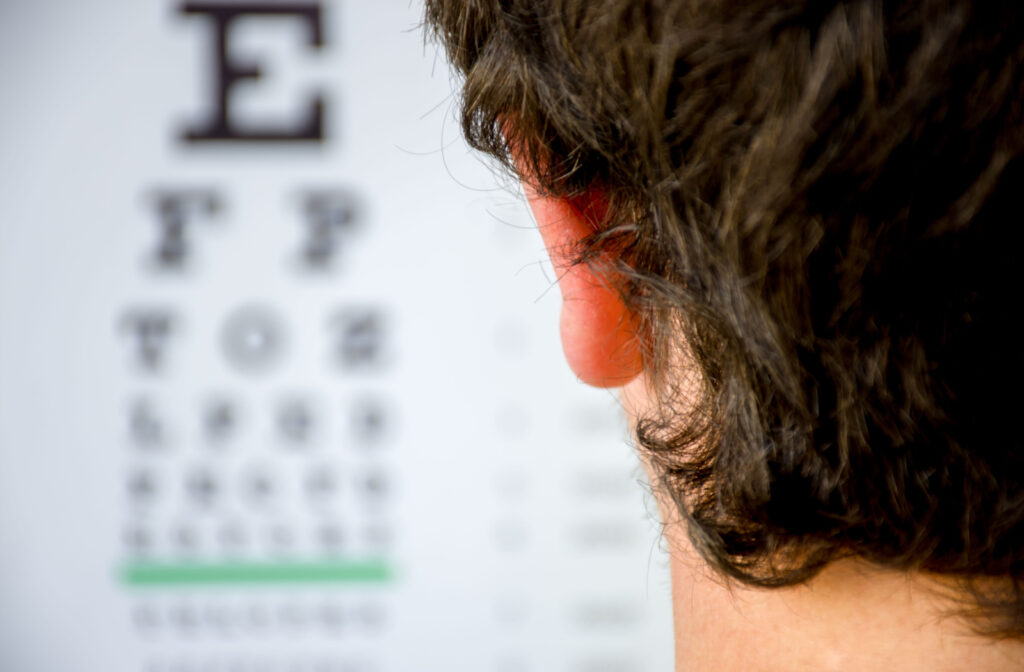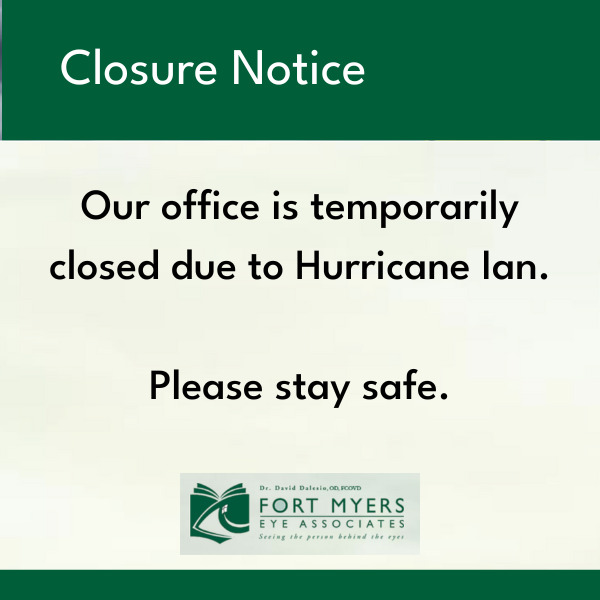Myopia, or nearsightedness, occurs when distant objects appear blurry while close ones remain clear. When myopia progresses to -5 diopters (D) or more of spherical correction, it is considered high myopia or severe nearsightedness.
Myopia occurs when the eyes grow too long, which puts stress on their internal structures and can lead to eye health complications. While there are no safe levels of myopia, high myopia increases the risk of complications exponentially.
Regular children’s eye exams are crucial for early detection and monitoring of myopia.
What Is Myopia?
In a normal eye, light is bent by the cornea to enter through the pupil and is focused by the lens so it lands directly on the retina. An eye with myopia is too long, which makes the light land in front of the retina, the light-sensitive tissue at the back of the eye. This issue with bending light is called a refractive error.
Children don’t always know how to voice vision problems. But myopia may be indicated by certain behaviors, such as:
- Holding books, toys, or other objects too close to their face
- Squinting their eyes or blinking a lot
- Having trouble reading words on a chalkboard at school or seeing the TV at home
General symptoms can include:
- Blurry distant vision
- Tired or sore eyes
- Eye strain
Myopia often develops during childhood and is typically diagnosed between the ages of eight and 12. It can worsen as a child grows. Your child’s risk for myopia can increase if you have a family history of the condition or if they spend a lot of time indoors and doing close-up work, such as reading or using electronic devices.
What Is High Myopia?
High myopia is a refractive error greater than -5.00 diopters or is a measurement of the eye’s optical power. As the numbers increase, so does the severity of the condition.
Causes of high myopia include a longer eyeball shape than people with mild myopia. The continuous lengthening of the eyeball in high myopia can cause stretching and thinning of the retina, which makes it more susceptible to damage.
Individuals with high myopia may face a greater risk of eye-related complications, such as the following eye diseases:
- Glaucoma (open-angle)
- Cataracts
- Retinal tears, which may lead to a retinal detachment
- Myopic maculopathy or myopic macular degeneration
High myopia often runs in families, hinting at a genetic predisposition. If your parents have myopia, you have a greater risk of developing high myopia. Genetic factors contribute to the structural changes in the eyeball that characterize high myopia and underscore the importance of understanding your family’s ocular history.
Myopia Diagnosis & Management
Your child’s eye doctor can diagnose myopia during a children’s eye exam and a dilated eye exam. These exams allow us to look for any signs of common refractive errors.
While genetics and environmental factors do play a role in myopia, we also know that spending long periods doing close-up work like reading or using digital devices can contribute to its progression. That’s why it’s important to manage the environmental aspects of high myopia. Finding a balance between screen time and outdoor activities can make a real difference.
Because myopia can pose risks to long-term eye health, we offer methods to help slow its progression. By taking proactive steps, we can work together to protect your vision and maintain optimal eye health.
Orthokeratology
Orthokeratology (ortho-k), or corneal reshaping therapy, is a non-surgical method to control myopia. With ortho-k, specially designed gas-permeable contact lenses are worn overnight to gently reshape the cornea, temporarily correcting the refractive error. It’s also effective at slowing myopia progression.
Soft Contact Lenses
MiSight contact lenses are FDA-approved specialty soft contact lenses for slowing myopia progression. These lenses are designed for children, offering comfort and ease of wear. And because they are daily disposable lenses, they provide convenience and reduce the risk of eye infections.
Studies have shown that children as young as can successfully wear daily disposable soft contacts with minimal impact on their eye health. With the right guidance, children can confidently and independently wear these lenses.
Atropine Eye Drops
Atropine is a medication that can be used for myopia control, and it has shown promising results in slowing myopia progression.
When applied to the eye in the form of eye drops, atropine works by temporarily relaxing the focusing muscles in the eye, which helps reduce the strain on the eye and potentially slows the eye’s elongation that causes myopia to worsen.
Myopia Management in Children
High myopia is a serious eye condition that can lead to vision-threatening complications during adulthood. It’s important to have regular eye exams to detect any vision changes early and take the necessary steps to manage and prevent any complications.
If your child experiences any changes to their vision between their scheduled appointments, book an eye exam with Fort Myers Eye Associates to assess their vision and monitor their prescription.





